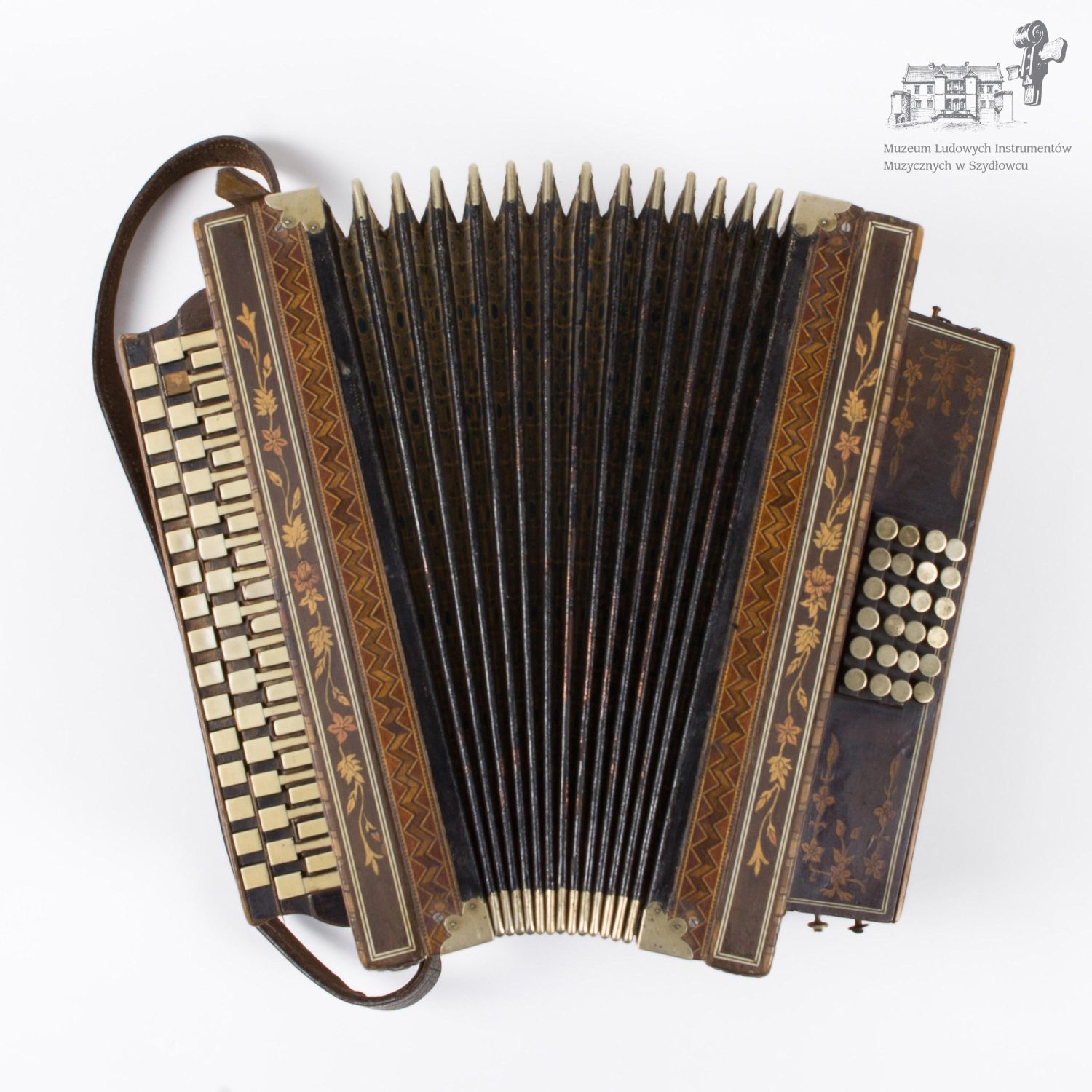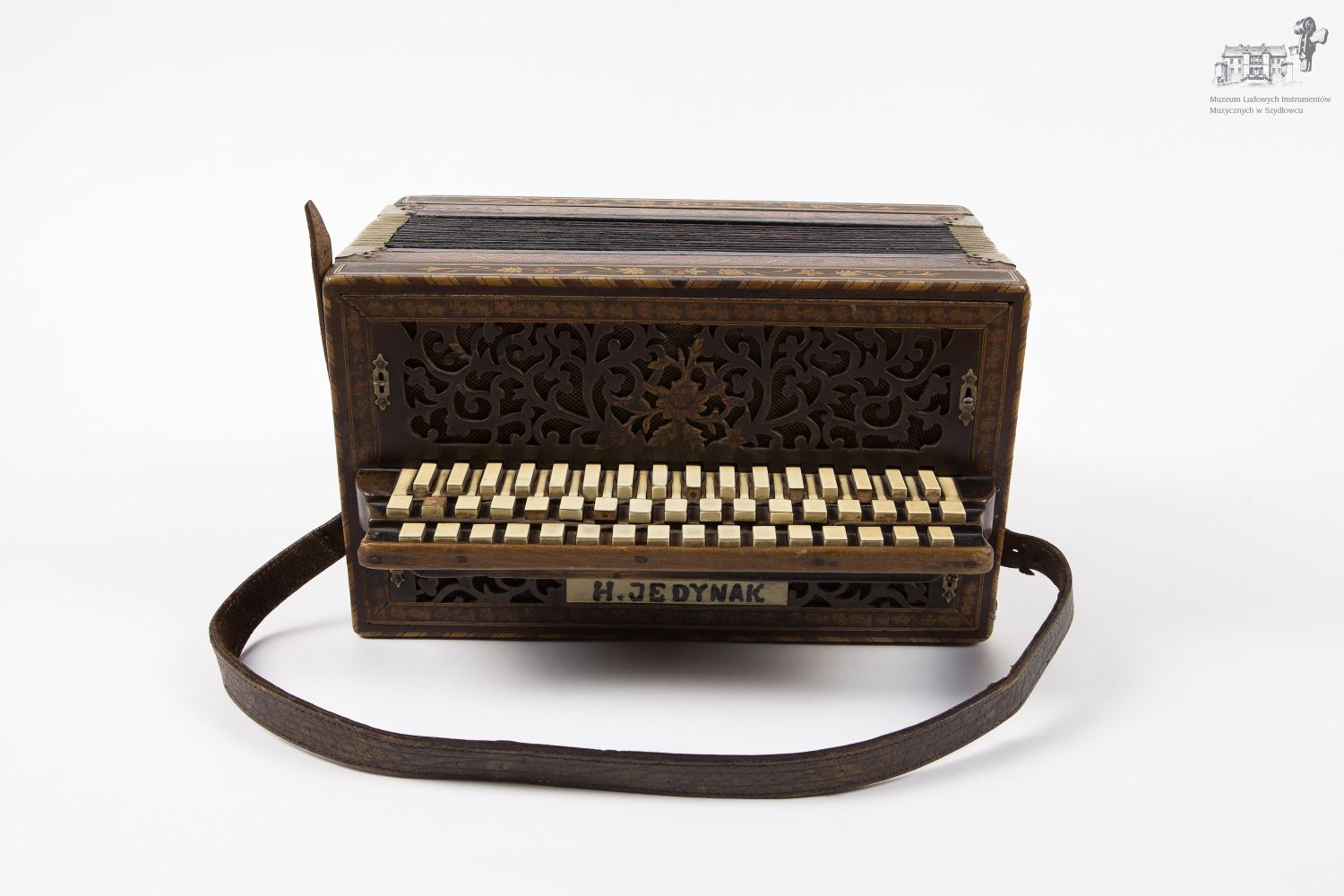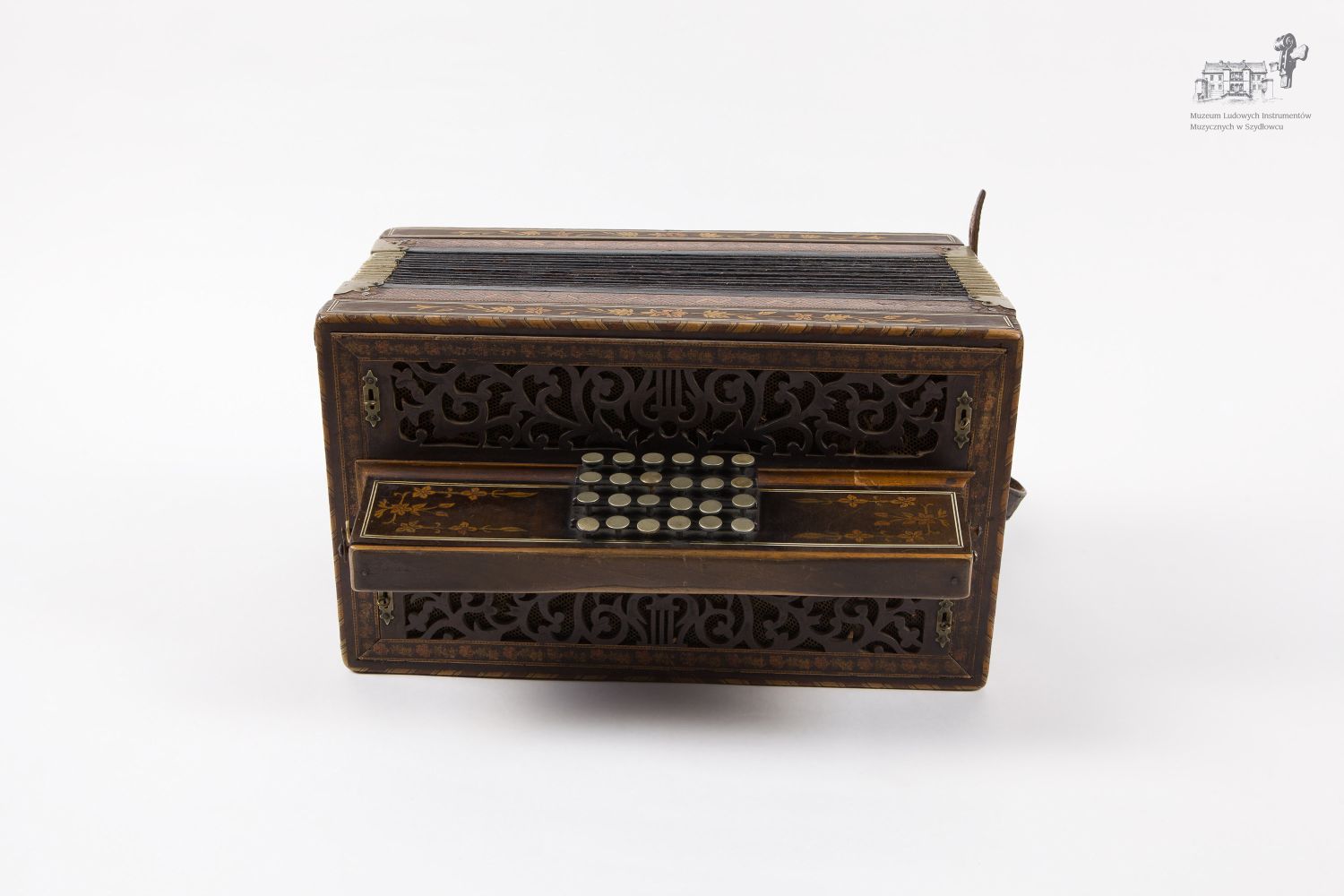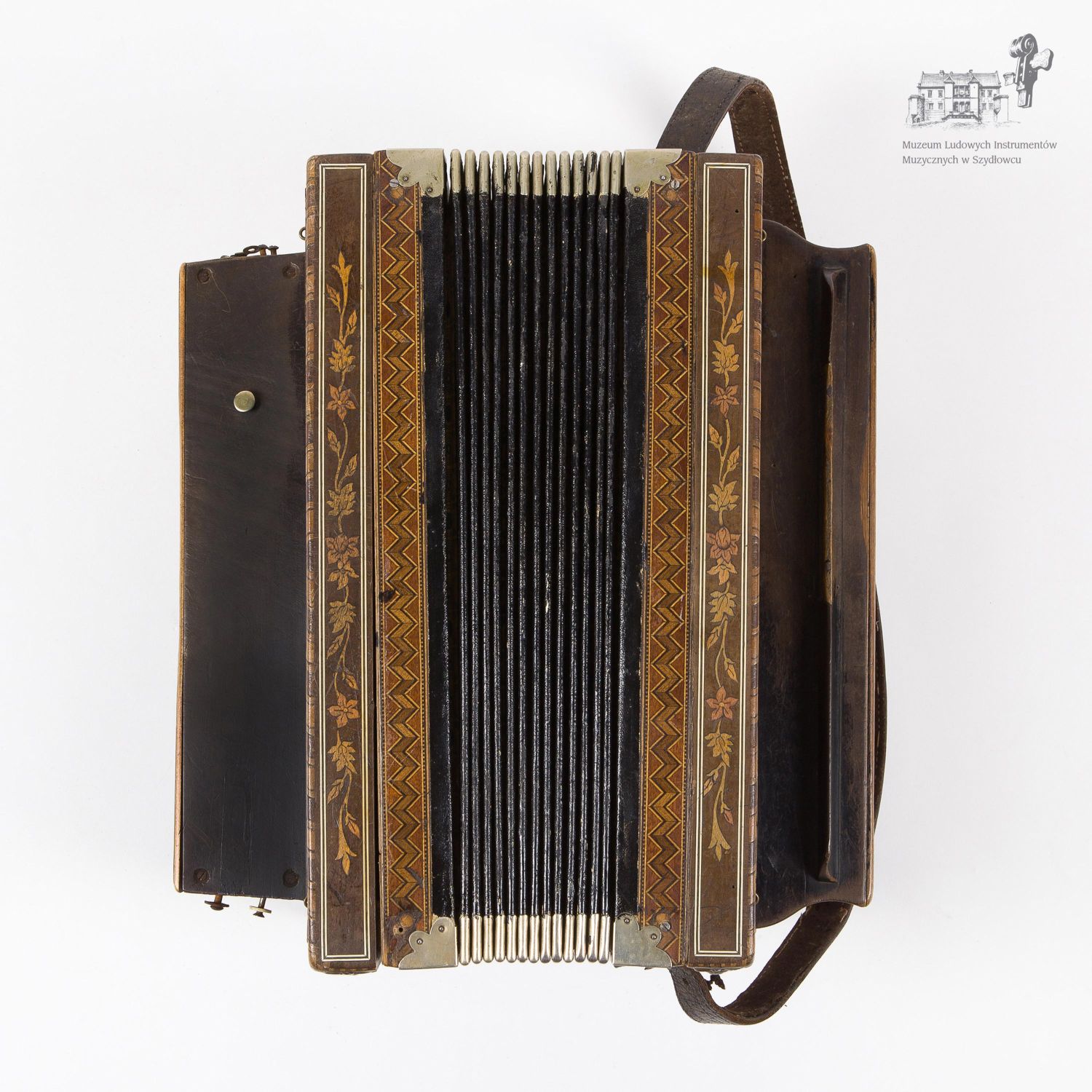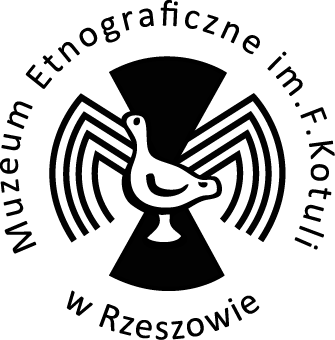accordion
accordion
Local name: harmonia ciągana (pulled accordion)Classification: 4 Aerophones / 41 Free aerophones / 412 Interruptive free aerophones / 412.1 Idiophonic interruptive aerophones or reeds / 412.13 Free reeds / 412.132 Sets of free reeds / 412.132-62-8 Sets of free reeds with flexible air reservoir, with keyboard
Maker: Jedynak Henryk (?)
Date: beginning of the 20th c.
Village / Town: Gniewoszów near Kozienice
Region: Mazovia
Country: Poland
Owner: Museum of Folk Musical Instruments in Szydłowiec
Inventory number: MS/S/24
Description: a hand accordion (as opposed to the pedal version); chromatic; called "black"; three rows of melody keys (16+17+16), 24 basses
Decoration: body decorated with inlays and open work (geometrical and floral motives, lyres)
Measurements: 366 x 213 mm
Materials: wood, metal, fabric
Inscriptions: H. Jedynak
Sound compass, tuning: different scales depending on the type and specimen; usually the melody keyboard is arranged in minor-third rows composing the chromatic scale Bb – bb''', while the bass side is arranged in the chromatic scale C – b, which makes it possible to get all major triads
Performance practice: after World War I the accordion became a popular component of folk bands; the hand type being especially popular in Mazovia on the left side of the Vistula river (the areas of Łowicz and Rawa Mazowiecka), and in Lesser Poland (the areas of Radom and Kielce)
Catalog card by: Maria Żurowska / Zbigniew J. Przerembski
Oberek from Powiśle; The Band from Maciejowice: Władysław Zarzycki (b. 1926), violin, Stanisław Pawelec (b. 1920), three-row accordion, Antoni Cichecki (b. 1934), drum; rec. Kazimierz 1992; Sources of Polish Folk Music
<< Back

